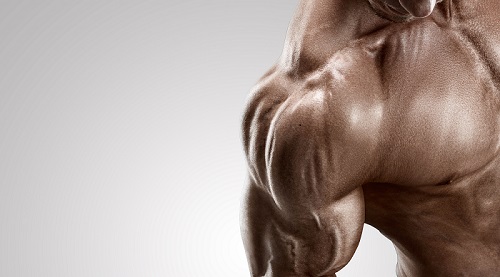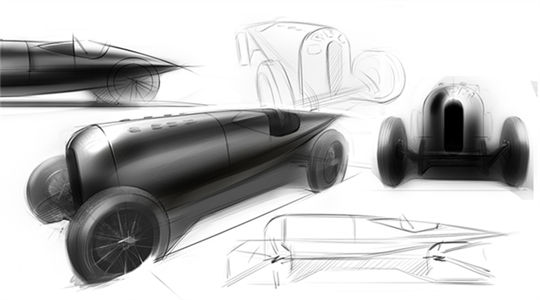
当前课程知识点:Production Engineering > Chapter 1 Introduction > 1.1 Main Tasks of Production Engineering > 1.1 Main Tasks of Production Engineering
返回《Production Engineering》慕课在线视频课程列表
返回《Production Engineering》慕课在线视频列表
同学们 大家好
欢迎学习采油工程这门课程
首先在这一节中我们先学习采油工程的主要任务
采油工程作为石油工程专业四门专业核心课程之一
与油藏工程 钻井工程
和完井工程是什么样的一个关系呢
我们都知道
油藏工程解决的问题是在进行油藏开发之前
制定开发方案的时候来确定
开发的方式 井网井距等等
钻井工程就是根据油藏工程确定的井位
利用一定的井眼轨迹 钻穿目的层位
完井工程就是将钻遇的储层
通过一定的方式沟通井筒与储层之间
同时建立整个井眼的井身结构
所有的这些工作做完之后
如何将流到井底的流体生产到地面呢
就是我们采油工程所要完成的任务
因此 采油工程跟其他的几门专业课程之间
联系是非常紧密的
采油工程的主要任务就是通过作用于
油藏的工程技术措施 使油气畅流入井
并经济高效地举升至地面
这个地方所说的工程技术措施指得主要有两类
一类就是保压措施
主要就是通过注水的方式来保持地层的能量
第二类是增产措施
有酸化措施去解决地层当中的污染
和堵塞的问题
通过水力压裂的措施
在地层当中压开一定的裂缝
增加地层内向井流动的能力
从而获得更高的产量
这些工艺措施的设计和实施是我们采油工程的
主要任务之一 除此之外
采油工程还需要将流到井底的流体
经济高效地举升到地面上来
那么经济高效的举升 是采取各种的举升手段
比如采用抽油机驱动柱塞泵的举升方式
采用将高压的气体注入到井筒内
辅助流体流动的气举举升的方式
有将电泵
电机下入井下进行的电潜泵举升的方式
还有将连续旋转的螺杆和定子
配合进行的螺杆泵举升的方式
所有的这些举升方式都有一个共同的特点
就是通过人工补充能量的方式
帮助 辅助这个油井进行举升
那么这些技术我们称之为人工举升技术
人工举升技术要经济高效的进行
如何设计 如何优化
是我们采油工程的另一项重要的任务
基于这些任务
我们把采油工程这门课程设置了九章
其中前四章介绍的主要是基础理论部分
包括油井的流入动态
井筒的流动规律以及节点分析方法
第五 第六章主要介绍举升技术
包括气举采油和有杆泵采油
后面三章主要是工艺措施介绍了注水
水力压裂及酸处理三个方面的技术
这九章的内容主要包括了
四个方面的基本的知识
这四类知识包括了基本原理计算方法
工艺设计和工况分析 通过这门课程
希望大家能够从这四类知识中更进一步地
全面了解采油工程的主要内容
通过以上的讲解 我们可以知道
采油工程所研究的是一个单井的生产系统
那么这个单井生产系统它包括了近井地带
井筒与地面管线 举升设备这三个类型
这三个类型构成了
我们所研究的单井的生产系统
在这个生产系统当中
我们所要研究的核心问题是什么
核心问题就是流动规律
也就意味着在整个单井系统当中
流动的问题
是一个经常要用到的核心的一个问题
而流动的问题总是解决压力跟流量之间的关系
所以我们研究每个流动环节中
压力与流量之间的关系
压力与流量之间的关系
贯穿于我们整个课程的讲解之中
以上就是本节的内容
同学们再见
-1.1 Main Tasks of Production Engineering
--1.1 Main Tasks of Production Engineering
-1.2 Flow in Production System
--1.2 Flow in Production System
-Problems
--Chapter 1 - Problems
-2.1 IPR Curve and Well Productivity
--2.1.1 Single-Phase Oil Inflow Performance Relationships
-2.2 Vogel's IPR and Applications
--2.2.2 Determination of IPR Curves Using Vogel's Equation
--2.2.3 Skin Factor and Flow Efficiency
--2.2.4 Extension of Vogel's Equation for Non-Complete Wells
--2.2.5 Combination Single-Phase Liquid and Two-Phase Flow
-Problems
--Chapter 2--Problems
-3.1 Two-Phase Flow in Wellbore
--3.1.1 Flow Regimes in Vertical Flow
-3.2 Two-Phase Vertical Flow Pressure Gradient Models
--3.2.1 Two-Phase Pressure Gradient Equations
--3.2.2 Predicting Gas-Liquid Flow Regimes Using the Okiszewski Correlation
--3.2.3 Pressure Gradient Calculation Using the Okiszewski Correlation
-3.3 Vertical Lift Performance
--3.3 Vertical Lift Performance
-Problems
--Chapter 3--Problems
-4.1 Nodal Analysis Approach
--4.1.2 Solution Node at Bottom of Well
--4.1.3 Solution Node at Wellhead
-4.2 Flow through Chokes
--4.2.2 Solution Node at Choke
-Problems
--Chapter 4--Problems
-5.1 Principles of Gas Lift
--5.1.2 Initial Kick-off of Gas Lift
-5.2 Gas Lift Valves and Gas Lift Completions
-5.3 Gas Lift Design
--5.3.1 Gas Lift Design for Specific Production Rate
--5.3.2 Gas Lift Design for Specific Injection Rate
--5.3.3 Kick-off Procedure with Unloading Valves
--5.3.4 Design Depths of Unloading Valves
-Problems
--Chapter 5--Problems
-6.1 Introduction of Surface and Downhole Equipment
-6.2 Operating Principle of Sucker Rod Pumps
-6.3 Pumping Unit Kinematics
--6.3.1 Motion of Polished Rod-Simple Harmonic Motion
--6.3.2 Motion of Polished Rod-Crank and Pitman Motion
-6.4 Polished Rod Load
--6.4.3 Peak Polished Rod Load and Minimum Polished Rod Load
-Problems
--Problems for chapter 6: Sucker Rod pumping I
-6.5 Calculation of Counterbalancing, Torque and Power
--6.5.1 Balance of Pumping Unit
--6.5.2 Counterbalancing Calculation
--6.5.3 Torque and Torque Factor
-6.6 Volumetric Efficiency of Pump
--6.6.2 Gas Effect on Pump Performance
--6.6.3 Measures of Enhancing Pump Volumetric Efficiency
-6.7 Design of Pumping System
--6.7.1 Strength Calculation and Design of Sucker Rod Strings
--6.7.2 Design Procedures of Pumping System
-6.8 Analysis of Sucker Rod Pumping Well Conditions
--6.8.1 Acoustic Surveys and Analysis of Annular Liquid Levels
--6.8.2 Introduction of Dynamometer Card
--6.8.3 Typical Dynamometer Cards
-Problems
--Problems: Chapter 6: Sucker Rod Pumping (II)
-7.1 Water Injection System
--7.1.1 Water Resources and Water Treatment
--7.1.2 Introduction of Water Injection System
-7.2 Injectivity Analysis
--7.2.1 Injectivity and Injectivity Index Curves
-7.3 Injection Tubing String
--7.3 Introduction of Injection Tubing Strings
-7.4 Analysis and Application of Injectivity Index Curves
--7.4.1 Analysis of Injectivity Index Curves
--7.4.2 Injection Choke Deployment
-Problems
--Chapter 7--Problems
-8.0 Introduction
-8.1 The Fracturing of Reservoir Rock
--8.1.1 Basic Rock Mechanics Parameters
--8.1.4 Fracture Initiation Conditions
-Problems
--Chapter 8(I)--Problems
-8.2 Fracturing Fluids
--8.2.2 Fluid-Loss Properties of Fracturing Fluids
--8.2.3 Rheological Properties of Fracturing Fluids
-8.3 Proppants
-8.4 Hydraulic Fracturing Design
--8.4.1 Productivity Index of Hydraulic Fracturing Wells
--8.4.2 Fracture Geometry Models
--8.4.3 Design Procedure for Hydraulic Fracturing
-Problems
--Chapter 8(II)--Problems
-9.0 Introduction
-9.1 Carbonate Acidizing
--9.1.1 Mechanism of Carbonate Acidizing
--9.1.2 Effect Factors of Reaction Rate
--9.1.4 Effective Distance of Live Acid
-9.2 Sandstone Acidizing
--9.2.1 Mechanism of Sandstone Acidizing
--9.2.2 Mud Acid Treatment Design
-9.3 Acidizing Treatment Technologies
--9.3.2 Acidizing Treatment Operations
-Problems
--Chapter 9--Problems
-Final Exam

